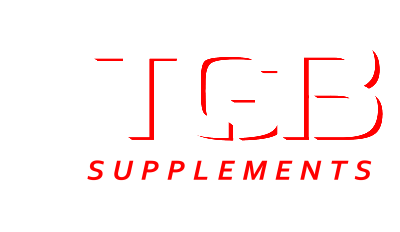The Effects of Steroids on Bone Marrow and Erythropoiesis
Anabolic Androgenic Steroids (AAS) were manufactured by physicians, in order to treat certain diseases, including aplastic anemia. According to the current definition of aplastic anemia, a severely depressed bone marrow cellularity must be accompanied by a decrease in 2 out of 3 blood lineages, usually erythrocytes. Currently AAS are used as salvage therapy for immunosuppressive therapy-refractory patients, often along with other therapeutic approaches. Specific AAS are able to stimulate erythopoietic effect and increase hemoglobin, the protein (globulin) responsible for oxygen transport into the tissues. Myoglobin is the oxygen carrier protein into skeletal-striated-contractile tissue. Hematocrit is the percentage of erythrocyte’s ratio in total blood’s volume. As hemoglobin (Hb) rises, hematocrit follows an increase about three fold. However, this ratio depends on the hydration state of the individual. This practically means that during dehydration, plasma is more concentrated, thus hematocrit is falsely elevated. On the contrary, when plasma is diluted (and hyponatremia occurs) hematocrit drops. Erythopoietin (EPO) is the protein released from renal cortex, responsible for tissue oxygenation. EPO then triggers bone marrow in order to signal the production of new red blood cells. Hypoxia is the stimulus for EPO production, during anemia, or other hypoxic occasions such as high altitude (>1,500m above sea level), or by smoking. Tobacco releases carbon monoxide (CO), that sends a hypoxic signal to the brain and kidneys afterwards release EPO. Therefore, a ”pseudo erythrocytosis” occurs during smoking, as a physiological response to tissue hypoxia-lack of oxygen supply. The role of AAS into the phenomenon of erythocytosis is important. They are considered to influence the hematological system via two main pathways. Firstly, AAS stimulate erythropoiesis directly by increasing erythroid colony-forming units in the bone marrow and promoting their differentiation into erythropoietin-responsive cells. Secondly, by promoting erythropoietin synthesis in the kidney. Testosterone enhances intestinal iron absorption from small intestine (jejunum-ileum), iron incorporation in red blood cells and hemoglobin synthesis. This is the main reason why men do have higher hematocrit-hemoglobin-myoglobin values than women. Androgens are a major stimulus for erythropoiesis, while estrogens are not. As a result of it, males do have greater stamina and endurance in sports (marathon, triathlon). Different AAS are able to stimulate EPO, including oxymetholone (DHT derivative), fluoxymesterone (testosterone’s derivative), equipose-boldenone (testosterone’s derivative – VET use), stanozolol (DHT derivative), methandrostenolone (methyltestosterone’s derivative), methyltestosterone (testosterone’s derivative). Initially it was thought that the androgenic activity of AAS is responsible for EPO production. However, oxymetholone (Anadrol 50-Anasterone) which was mainly manufactured for the treatment of aplastic anemia has a moderate androgenic activity. The same is valid for stanozolol (Winstrol) which also has a small androgenic index as well. On the contrary, fluoxymesterone (Halotestin-Stenox) is among the strongest androgenic anabolic steroid, with an androgenic index eight times greater than testosterone has. There is a certain medical protocol, in order for a steroid to be effective in terms of hemopoietic effect. The dosage of the particular AAS has to be at least 1mg/kg of body weight of the patient. This is translated into 50mg for a 50kg anemic individual who suffers from anemia. This is a dose dependent effect, meaning the greater the dosage, the more EPO is released. EPO induction is accompanied by an increase in Hb. In contrast to EPO, Hb is still elevated 15 days after dose which probably is due to the long life span of the erythrocytes. It is possible that EPO and Hb may be even more elevated after repeated use of testosterone. Andropause is a clinical syndrome characterized by testosterone’s decline. Reduction in testosterone results in a number of physiologic changes. These include alteration in body composition (decrease in lean body mass, increase in fat mass), decrease in energy and muscle strength, decreased libido and erections, increased osteoporosis, mood changes and reduction in cognitive function. The stimulatory effects of testosterone on erythropoiesis are used in testosterone replacement therapy. Studies have shown that testosterone treatment of older males significantly increase Hb levels and the biological activity of erythropoietin, without affecting erythropoietin concentrations. Though anemia of chronic renal failure is multifactorial, deficient production of EPO is presumed to be the main etiology. AAS have been shown to increase plasma EPO levels in anephric patients and play an important role in the treatment of anemia of end-stage renal disease. AAS may also be more cost-effective than r-EPO and have an advantage of providing anabolic effect. Other forms of anemias, such as the iron deficiency anemia, are not involved into that case, since supplementation of iron (ferrum) is enough for ferritin stores to restore. Same for megaloblastic anemia, due to cobalamine (B12 vitamin deficiency), caused by malnutrition, gastric cancer, alcoholism, etc. However, in thalassaemic patients AAS can be used for their effect on hypogonadism, osteoporosis and hemopoeisis. It has to be mentioned, that increased hemopoiesis leads to erythrocytosis and finally polycytemia. The later could become a risky factor for cardio vascular disease. Blood viscosity increases dramatically, as hematocrit elevates gradually. There is an upper threshold to where erythrocytosis is within normal levels. Hemoglobin has to be <18, while hematocrit <54%. Blood donation is permitted, every 120 days. On the contrary, when hemoglobin levels rise above 18 and hematocrit elevates over 54%, and then polycytemia has to be treated with phlebotomies, where the blood is no longer able to be used for another anemic patient. Alternative methods against polycytemia involve avoidance of red meat consumption and a daily use of salicylic acid. Aspirin, as all NSAIDs have the ability to block prostaglandins and prevent platelets activity. Therefore, platelets aggregation is inhibited and clotting effect is limited. In case someone has deficiency of G6PD enzyme, instead of aspirin he should use DHA, EPA as they have anti-inflammatory effect through PGs inhibition.
by George Touliatos
© 2016 Anabolic.org. Read more Anabolic Steroids & Substance Info at: http://www.anabolic.org/the-effects-of-steroids-on-bone-marrow-and-erythropoiesis-2/

Add Comment